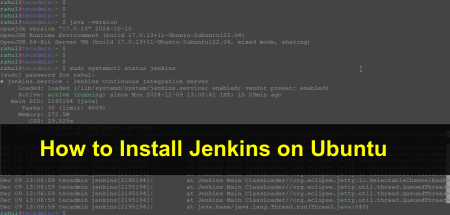Bash is a powerful command-line interface and scripting language that offers a wide range of mathematical operations, including division and remainder. Division and remainder are fundamental operations used in various programming and mathematical applications. This article will discuss how to perform division and remainder operations in Bash and their usage.
Calculate Division in Bash
The division is a mathematical operation that involves dividing one number by another. In Bash, division can be performed using the / operator. Here is an example:
1 2 3 | $ echo $(( 10 / 3 )) #Output: 3 |
In the above example, we used the $(( )) syntax to perform an integer division of 10 by 3. The result is an integer value of 3.
If we want to perform floating-point division, we can use the bc command, which is a command-line calculator that supports arbitrary-precision arithmetic. Here is an example:
1 2 3 | $ echo "scale=2; 10 / 3" | bc #Output: 3.33 |
In the above example, we used the echo command to send the mathematical expression 10 / 3 to the bc command, which then returned the result with two decimal places.
Getting Remainder in Bash
The remainder is a mathematical operation that involves finding the remainder when one number is divided by another. In Bash, the remainder can be performed using the % operator. Here is an example:
1 2 3 | $ echo $(( 10 % 3 )) #Output: 1 |
In the above example, we used the $(( )) syntax to find the remainder when 10 is divided by 3. The result is an integer value of 1.
If we want to perform floating-point remainder calculations, we can use the bc command with the % operator. Here is an example:
1 2 3 | $ echo "scale=2; 10.5 % 3" | bc #Output: 1.50 |
In the above example, we used the echo command to send the mathematical expression 10.5 % 3 to the bc command, which then returned the remainder with two decimal places.
Handling division by 0 errors
One important thing to keep in mind when performing division in Bash is the possibility of division by zero errors. When dividing by zero, Bash will throw an error message:
1 2 3 | $ echo $(( 10 / 0 )) #Output: bash: division by 0 (error token is "0 ") |
To avoid such errors, we can use conditional statements to check for the divisor value before performing the division operation. Here is an example:
1 2 3 4 5 6 7 8 9 | #!/bin/bash divisor=0 if [ $divisor -eq 0 ]; then echo "Cannot divide by zero." else echo $(( 10 / divisor )) fi |
In the above example, we set the divisor variable to 0 and then used an if statement to check if the divisor value is zero. If it is, we print an error message. Otherwise, we perform the division operation.
Conclusion
In this article, we have discussed how to perform division and remainder operations in Bash. We have seen how to perform integer and floating-point division and remainder calculations using the / and % operators and the bc command. We have also seen how to handle division by zero errors using conditional statements. By mastering these basic operations, you can start building more complex Bash scripts that involve mathematical calculations.



